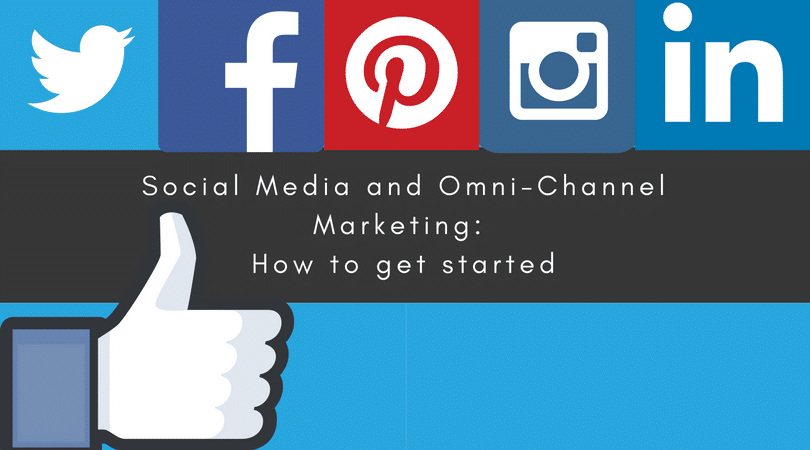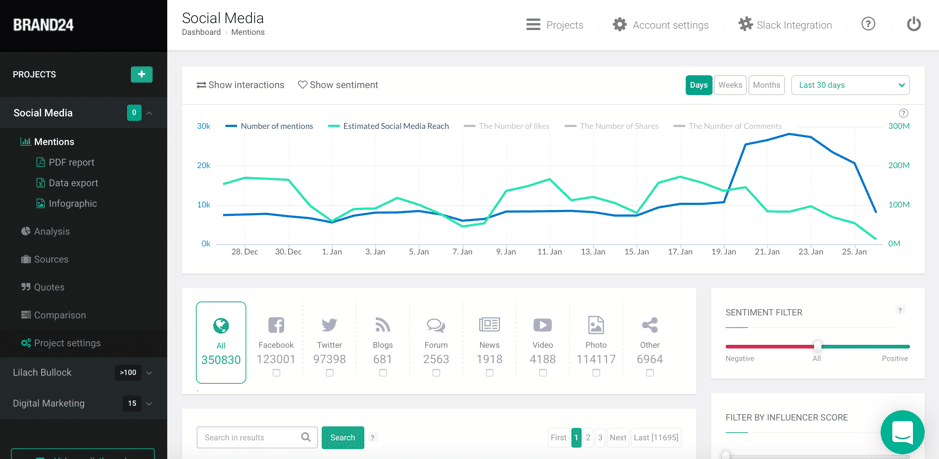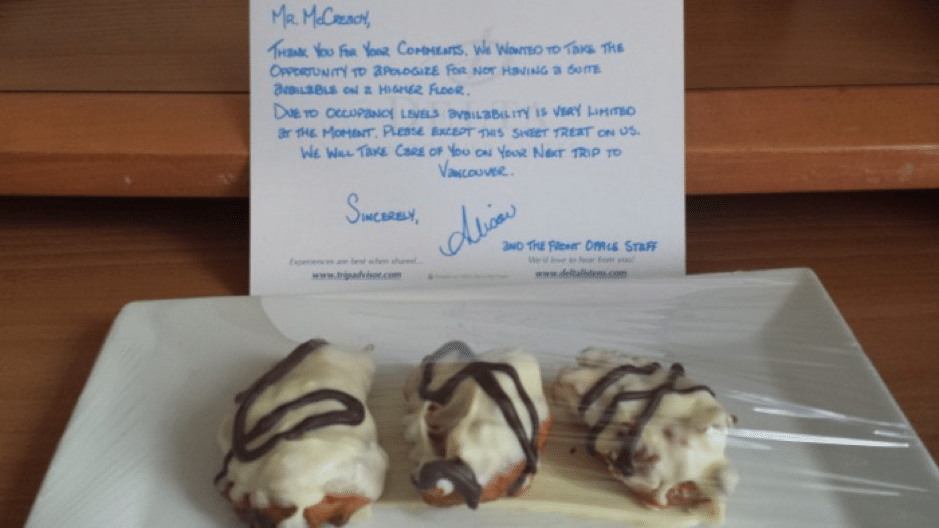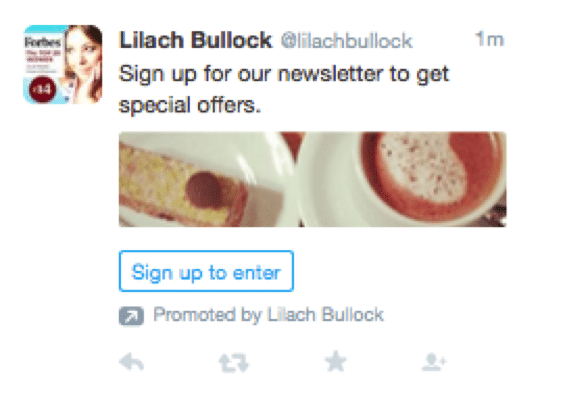Follow Lilach
How to use social media as part of an integrated omni-channel strategy
In a previous blog post, I talked about what an omnichannel strategy is and how it can be implemented by businesses. Social media is a huge part of a good omni-channel marketing strategy, so in this blog post, I’m going to show you how you can use social media as part of your integrated omni-channel strategy.
If you aren’t familiar with omnichannel marketing, it’s one of the more recent forms of marketing and one that is very likely to be the future of marketing – particularly when it comes to retail businesses. It involves using multiple marketing channels in a seamless integrated way, with the aim of creating a better, more cohesive customer experience.
Social media is a big part of that; in fact, it’s most likely one of the biggest causes for the emergence of this marketing style, as is digital in general. Because we are so attached to the digital world and all of our digital devices and because we spend so much of our time online, customers’ expectations are very rapidly changing, and these expectations include a better integration among digital channels, as well as between the digital and the physical. They might not even know it yet – but that’s definitely what we’re heading towards, and very rapidly so.
If you’ve read my previous guide on omnichannel marketing and seen the Disney, Barneys New York and Van Heusen examples, it can seem quite daunting (and extremely expensive!) to set up and omnichannel strategy, particularly if you are a small or medium business. That said, there is a lot that you can do when it comes to social media, that doesn’t involve paying for and setting up any extensive omnichannel technologies.
Here’s how you can utilize social media as part of an omnichannel strategy:

How to get started
The importance of strong customer relationship management
Customer service and social media
Examples of amazing customer service on social media
Integrating social media and email marketing
Other ways of using social media as part of an omnichannel strategy
Social media and Omni-channel marketing: how to get started
As I mentioned a little earlier, social media has played a huge role in shaping the way we interact with each other, with companies and brands, as well as in the expectations we have from brands.
Consumers are now using social media in most of the different stages of the buying process: when researching products and services, when making the decision to buy and when they are encountering any issues and are in need of customer service.
Because of this, businesses need to find ways of truly integrating their social media strategy with all of their other marketing channels, including both digital and physical.
[clickToTweet tweet=”How to use #socialmedia as part of an integrated #omnichannel strategy via @lilachbullock” quote=”How to use #socialmedia as part of an integrated #omnichannel strategy via @lilachbullock”]
The way you start is simple: by researching your customers and finding out where it is they’re spending their time online, what they’re preferred social networks are and what they are using each one for. For example, if you have accounts on multiple social networks, you might find that Twitter is much more likely to be used for customer service – this is useful to know, as you will be able to train those managing your Twitter account to provide better customer service.
But in order to truly make your social media be a part of an omnichannel strategy, you need to take things much further.
First of all, you will need a good tool to help you manage all of your social media as part of a team so that everyone has access to all the relevant information. You need to be able to easily listen to your audience, analyze their behaviour, as well as be able to respond to any mention, question or customer service issue in real-time. A good tool can help you do that, particularly if it also has some marketing automation capabilities to help you sort your audience and make sure you never miss any important updates, such as social media management tool Agorapulse, for example.
The importance of strong customer relationship management
The beauty of social media is that it allows you to create a more personalized experience for each and every one of your customers, which is what they expect from brands. Customers will often expect you to somehow acknowledge them on a more personal level, which is an essential part of an omnichannel strategy.
It’s more than just a case of addressing them with their first name – you need to know everything there is to know about that customer (not in a creepy way, though!), such as interests, passions, their history of past purchases and history of conversations between the two of you. Ask yourself this:
- When and where have they interacted with your business in the past?
- What issues have they faced?
- Have they contacted a different department before interacting with you on social media and what have they discussed?
- Personal information: what are they interested in, what shops do they usually use (digital or brick and mortar – and if so, which ones?), etc.
[clickToTweet tweet=”How to use #socialmedia as part of an integrated #omnichannel strategy via @lilachbullock” quote=”How to use #socialmedia as part of an integrated #omnichannel strategy via @lilachbullock”]
The more you know, the better you will be able to deal with your customers and assist them. The best way to manage this more efficiently is to have a strong customer relationship management strategy in place. Every time someone in your company interacts with a particular customer, the details of that interaction should be stored in one central place, so that anyone can easily access it on the fly.
Everyone working for your business should be made aware that they should use it for every customer interaction and always check it as they talk with someone, so that they’re always up to date and can continue a conversation from where it was left off. This will truly help you towards achieving a personalized experience for all of your customers.
Customer service and social media
Social media offers a great platform for customer service because of its convenience. It’s much easier and quicker for the customer to send out a tweet informing you of their issue, rather than have to send an email or have to spend half an hour on hold to talk to someone on the phone.
In order to offer great customer service on social media, you need three main things:
- A good monitoring system in place: you need to be able to catch any customer service queries as soon as possible. The quicker you deal with them, the better – not just for the customer, but also for your business, particularly from a PR standpoint. The thing is, you can’t just rely on people mentioning you by your social handle; you need to monitor your brand name, so you can make sure you catch any and all customer enquiries. You can also set up a dedicated account for customer service, especially if you have a bigger brand, as well as a dedicated hashtag that people can use. You can use most social media management tools for this (such as Agorapulse), or you can used a more advanced tool, such as Brand24 or Brandwatch, which have much more extensive web monitoring capabilities.
- A CRM tool: anyone managing your social media needs to have access to the centralized CRM tool, so that they know everything possible about the customer and are prepared to deal with them.
- Social media manager trained in customer service: whoever is managing your social media needs to be equipped to deal with any customer service issue. They will need access to the tools your customer service team use and they will also need to be trained and prepared for any possible customer service scenario.
[clickToTweet tweet=”Customer service and #social media via @lilachbullock” quote=”Customer service and #socialmedia via @lilachbullock”]
Customer service on social media done right: examples
Delta Hotels
Delta Hotels offer a great example of amazing customer service on social media, by integrating different social channels, as well as entering the real world in an impressive way.
Mike McCready was attending a conference in Vancouver and was staying at the Delta Vancouver Suites.
As you can see from the image above, he didn’t exactly have the best view in the house. So, he sent out an Instagram with this image, simply saying,
“the inside of my room at the Delta is really nice, but the view not so much.”
He didn’t even tag Delta Hotels in his update and as he mentioned in a blog he posted about the experience afterwards, he wasn’t exactly expecting anything from them, it was just a comment, a fun Instagram.
Delta Hotels were monitoring though and they noticed his Instagram. But, because Instagram is not really a great platform for customer service, they found Mike on Twitter, switching platforms, and got back to him, offering to help.
@MikeMcCready Im glad you like your room! At what Delta Hotel are you booked in? I may be able to help you with a better view? 😀 DJ
— Delta Hotels (@DeltaHotelsLtd) June 25, 2013
Since Mike didn’t want to switch rooms because he was leaving the next day, Delta Hotels asked him to DM them so that they can give some tips for any future bookings that he might make.
@MikeMcCready Can you DM me so I can provide some tips for your next booking? 😀 DJ
— Delta Hotels (@DeltaHotelsLtd) June 25, 2013
Mike was already impressed with the speedy and efficient response and he appreciated the fact that Delta was listening to him and wanted to create a better experience for him, even when it wasn’t necessary, as he later recounted in a blog post.
And while this would’ve been enough effort on Delta Hotel’s part, they actually took things a bit further. When he came back from his room later that day after attending the conference, he found a surprise from Delta Vancouver Suites: some sweets accompanied by a handwritten note from the hotel:
This impressed Mike and I’m sure they’ve turned him into a return customer. Not only that, but he also wrote a post about it on his blog and spread the word about the nice gesture. And there really is no better form of marketing than word-of-mouth.
This is a great example of how companies can deal with customer service and turn what is potentially a damaging situation for them, into not just a happy customer, but an amazing PR opportunity.
[clickToTweet tweet=”How to use #socialmedia as part of an integrated #omnichannel strategy via @lilachbullock” quote=”How to use #socialmedia as part of an integrated #omnichannel strategy via @lilachbullock”]
Fishy Sainsburys
Another good example of great customer service on social media is from Sainsburys. Sometimes, you need to employ some wittiness in your response to customers and one of the people managing Sainsbury’s Twitter account really rose to the occasion.
One of their customers was looking to buy some battered fish in their local store, but it didn’t have a “bar cod” so he let Sainsbury’s know on Twitter.
@TeaAndCopy Were there no other packs in the plaice, or was that the sole one on the shelf? Floundering for an explanation! David.
— Sainsbury’s (@sainsburys) January 10, 2014
As you can see from the tweet above, Sainsbury’s were not only quick to respond, but they also managed to respond in the same vein as the customer.
A hilarious conversation ensued from there that involved dozens of fish pun tweets, not forgetting to also help Marty in the process.
.@sainsburys I don’t think it’s necessary to scale the shelves, David. There’s no point doing it for the halibut. You might pull a mussel.
— Marty Lawrence (@TeaAndCopy) January 10, 2014
These responses have attracted a lot of engagement for Sainsbury’s, with lots of retweets and likes for each perfectly placed fish pun, as well as positive publicity as they have been used as examples of great and very hilarious customer service.
As you can see from these examples, customer service on social media can even be a positive for companies. By being quick to respond and taking that extra step to please the customer in question, you can turn a potential damaging situation into great publicity for your brand.
What we can learn from these two examples is that:
- You should always be monitoring and listening for any mentions of your brand on social media
- When possible, think outside the box and go above and beyond for the customer
Integrating social media with email marketing
One of the ways to make social media a part of an integrated, omni-channel strategy is to connect it to your email marketing. Integrating the two can be very beneficial as it can help you get more engagement on social media, and more subscribers for your email list.
First off, include links to your social channels in all of your emails. When using marketing automation and drip emails, one of the first emails you send should include the links to the social channels you are on, and give your subscriber a good reason to join you on social as well.
Another way of using email is to promote any social media campaigns. For example, if you are holding any contests, or maybe exclusive deals for your social media followers, let your email list know about it and let them know what they need to do in order to take part in the contest or special offer.
[clickToTweet tweet=”How to use #socialmedia as part of an integrated #omnichannel strategy via @lilachbullock” quote=”How to use #socialmedia as part of an integrated #omnichannel strategy via @lilachbullock”]
Alternatively, you can also use social media to get more subscribers for your list. For example, you can create Twitter Cards that let your followers subscribe to your list easily.
You can also use your social platforms to share the benefits to joining your list. For example, say you’ve set up a campaign where you are offering your list an awesome promotion, like for example they’re getting 30% off on some of your products throughout the next week. You can then advertise this on social media. Send out on update where you let your fans and followers know what they could be getting if they joined your email list.
Upload your subscriber list
Another way to integrate email and social media is to upload your subscriber list to your social media accounts. You can do this on most social networks, including Twitter, Facebook, Google+ and LinkedIn and it can help you in multiple ways.
For example, you can use this opportunity to learn more about your customers. The more you know about them, such as what their interests and passions are, the better you can personalize the emails you send them, which in turn helps you get better results. Likewise, on social media, when you write better-targeted updates, you increase your chances of getting more engagement, more clicks and traffic and so on.
After all, the omni-channel strategy is all about using personalization to enhance the overall customer experience.
As you add your email list to social media, use the opportunity to also interact with them more, on a different channel. This leads to more followers and better results on social media, plus you’re truly cementing these valuable relationships. You’re not just sending them email broadcasts anymore, you’re starting to build real relationships with them, cross-platform.
You can also use your uploaded subscriber list to create a more targeted social media campaign. Although most social networks have great targeting abilities, targeting your subscriber list directly can get you even better results, as they’ve already subscribed to your list, so they are familiar with your brand and interested in what you have to offer.
In fact, they might be in your list because they’re considering buying from you, or because they’ve already bought something from you and might be willing to buy more. So who better to target than them in order to increase your ad campaigns’ success?
[clickToTweet tweet=”How to use #socialmedia as part of an integrated #omnichannel strategy via @lilachbullock” quote=”How to use #socialmedia as part of an integrated #omnichannel strategy via @lilachbullock”]
Other ways of using social media as part of an omnichannel strategy
The more ways you can find to integrate your social media with other channels, the better. Here are a few more ways of doing so:
- Share your purchases: as people buy your products, make it easy for them to share with their social media followers. Many businesses already do this in an online setting, but another way to do it is to email your customers their receipt, along with images and links to what they bought with the option of sharing it with their social media followers. This way, you’re reaching more people, and their followers might be also tempted to buy something from you.
- Use social media to sell your products: you can also sell your products directly on social media, for example on Instagram or Pinterest. This makes it more convenient for the customer, and you’re killing two birds with one stone: you get to promote your products on social media, while also making more sales to an audience that might otherwise buy from a different store.
Conclusion: social media and omnichannel marketing
Social media should be an integral part of an omnichannel marketing strategy. The more you can integrate between different channels, in a seamless way, the better – both for your business and for your customer. What other ways do you know of to integrate social media with other channels and platforms?
Please leave a comment and share if you liked the post:)

Follow Lilach




















